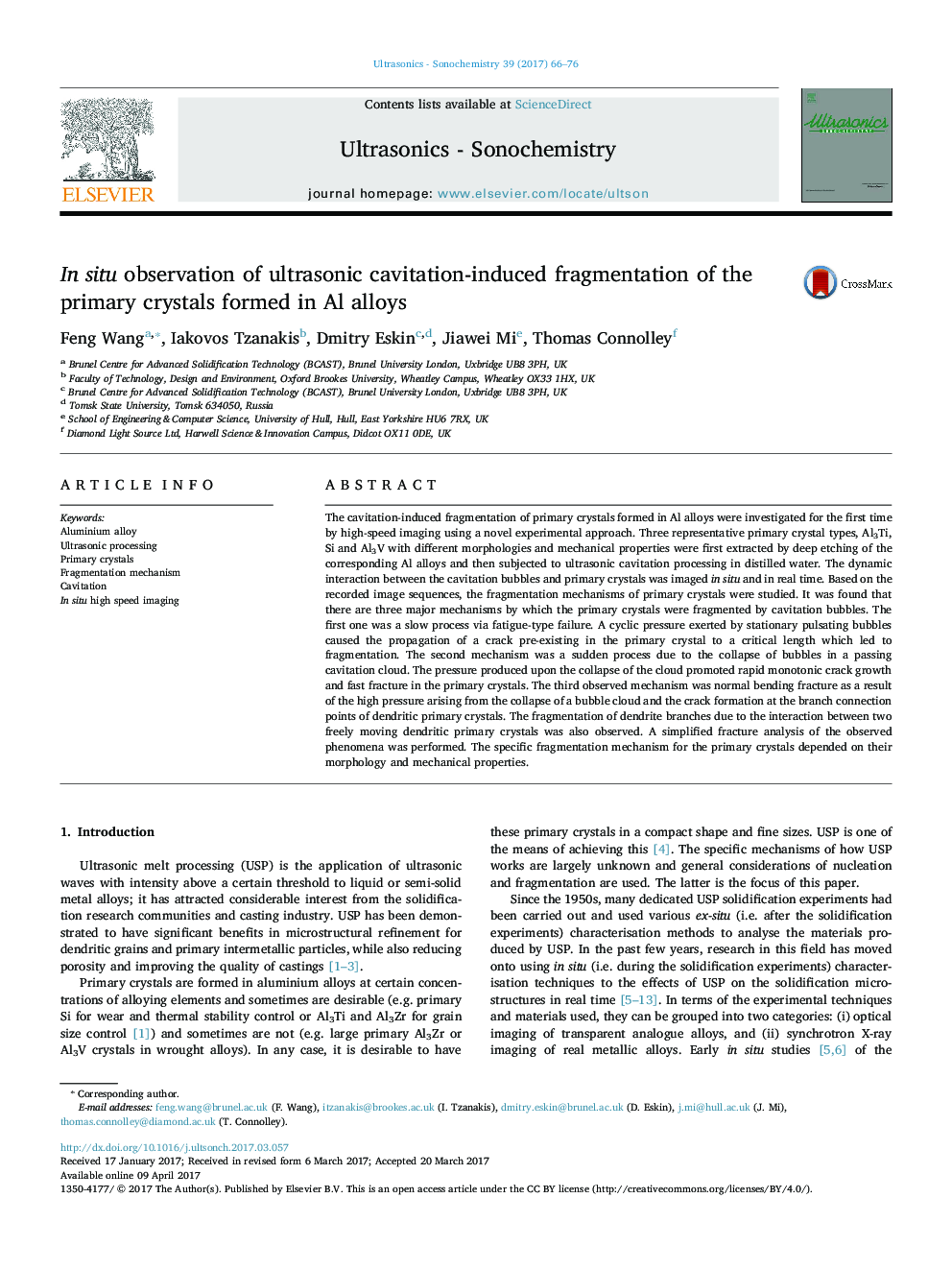| Article ID | Journal | Published Year | Pages | File Type |
|---|---|---|---|---|
| 5144532 | Ultrasonics Sonochemistry | 2017 | 11 Pages |
Abstract
The cavitation-induced fragmentation of primary crystals formed in Al alloys were investigated for the first time by high-speed imaging using a novel experimental approach. Three representative primary crystal types, Al3Ti, Si and Al3V with different morphologies and mechanical properties were first extracted by deep etching of the corresponding Al alloys and then subjected to ultrasonic cavitation processing in distilled water. The dynamic interaction between the cavitation bubbles and primary crystals was imaged in situ and in real time. Based on the recorded image sequences, the fragmentation mechanisms of primary crystals were studied. It was found that there are three major mechanisms by which the primary crystals were fragmented by cavitation bubbles. The first one was a slow process via fatigue-type failure. A cyclic pressure exerted by stationary pulsating bubbles caused the propagation of a crack pre-existing in the primary crystal to a critical length which led to fragmentation. The second mechanism was a sudden process due to the collapse of bubbles in a passing cavitation cloud. The pressure produced upon the collapse of the cloud promoted rapid monotonic crack growth and fast fracture in the primary crystals. The third observed mechanism was normal bending fracture as a result of the high pressure arising from the collapse of a bubble cloud and the crack formation at the branch connection points of dendritic primary crystals. The fragmentation of dendrite branches due to the interaction between two freely moving dendritic primary crystals was also observed. A simplified fracture analysis of the observed phenomena was performed. The specific fragmentation mechanism for the primary crystals depended on their morphology and mechanical properties.
Related Topics
Physical Sciences and Engineering
Chemistry
Chemistry (General)
Authors
Feng Wang, Iakovos Tzanakis, Dmitry Eskin, Jiawei Mi, Thomas Connolley,
